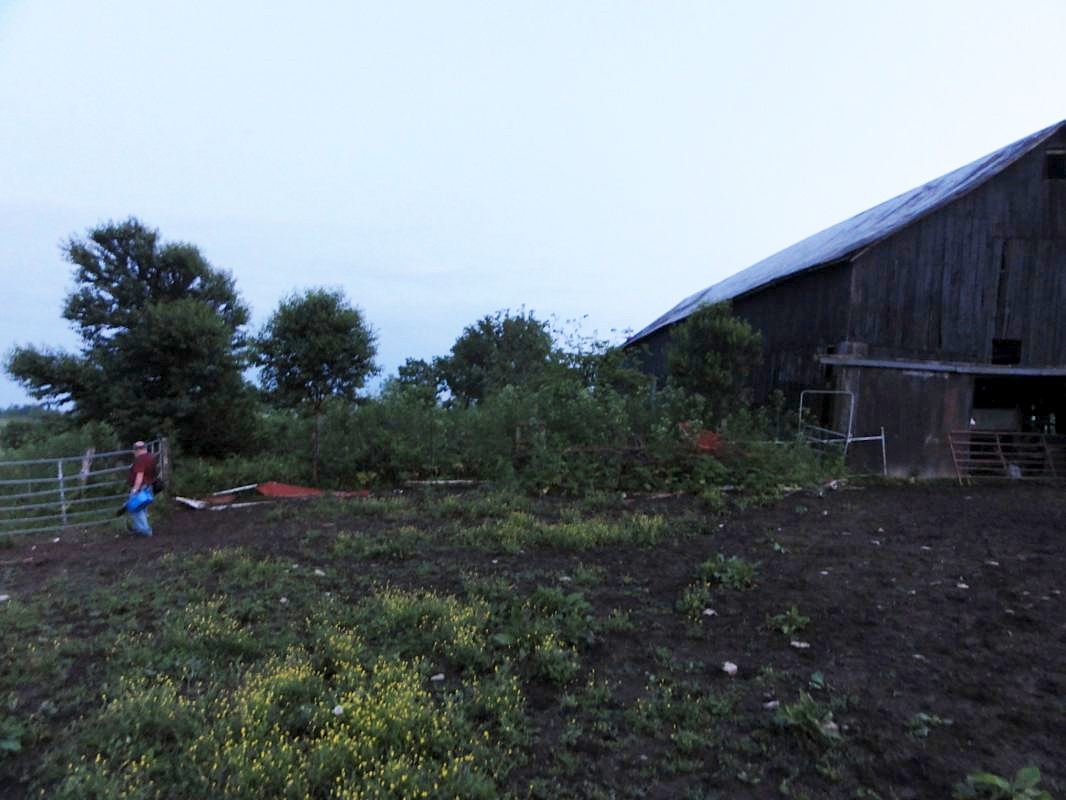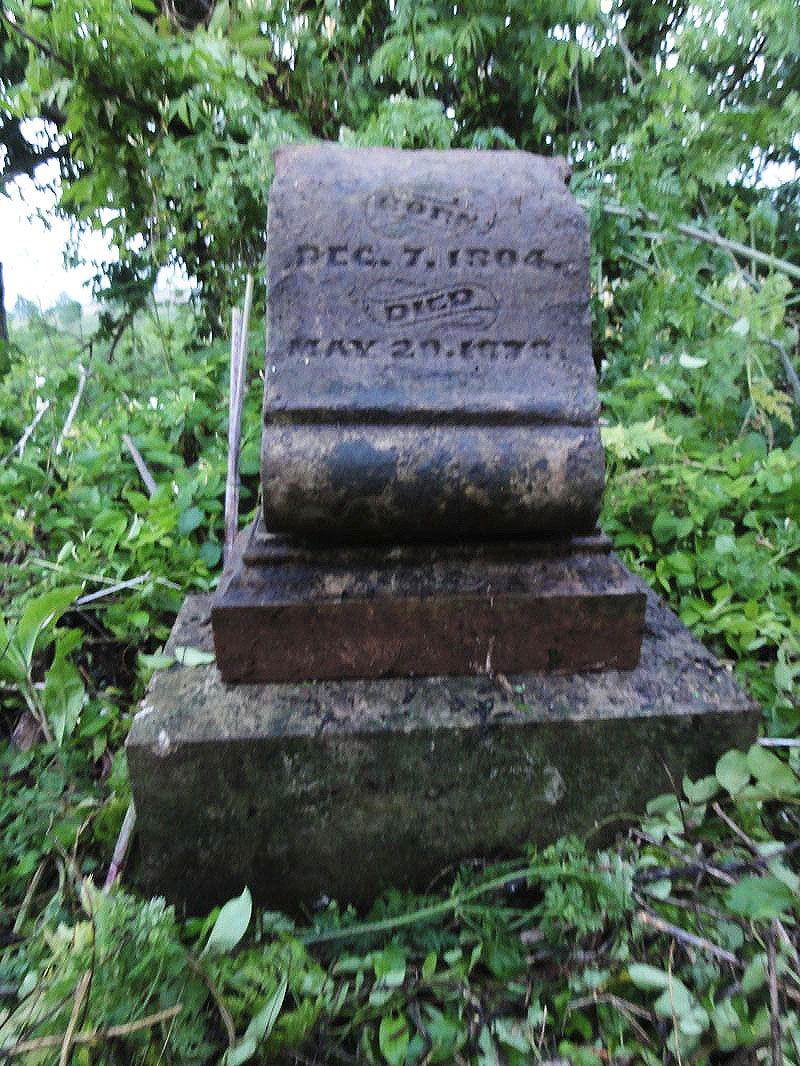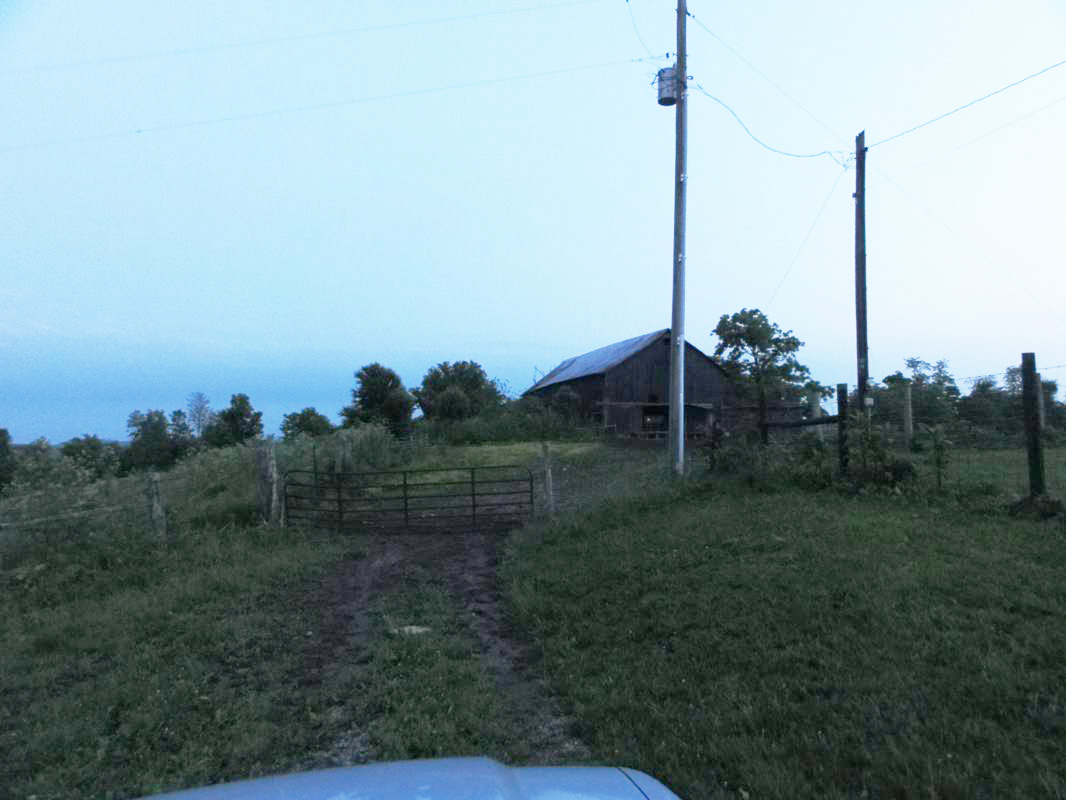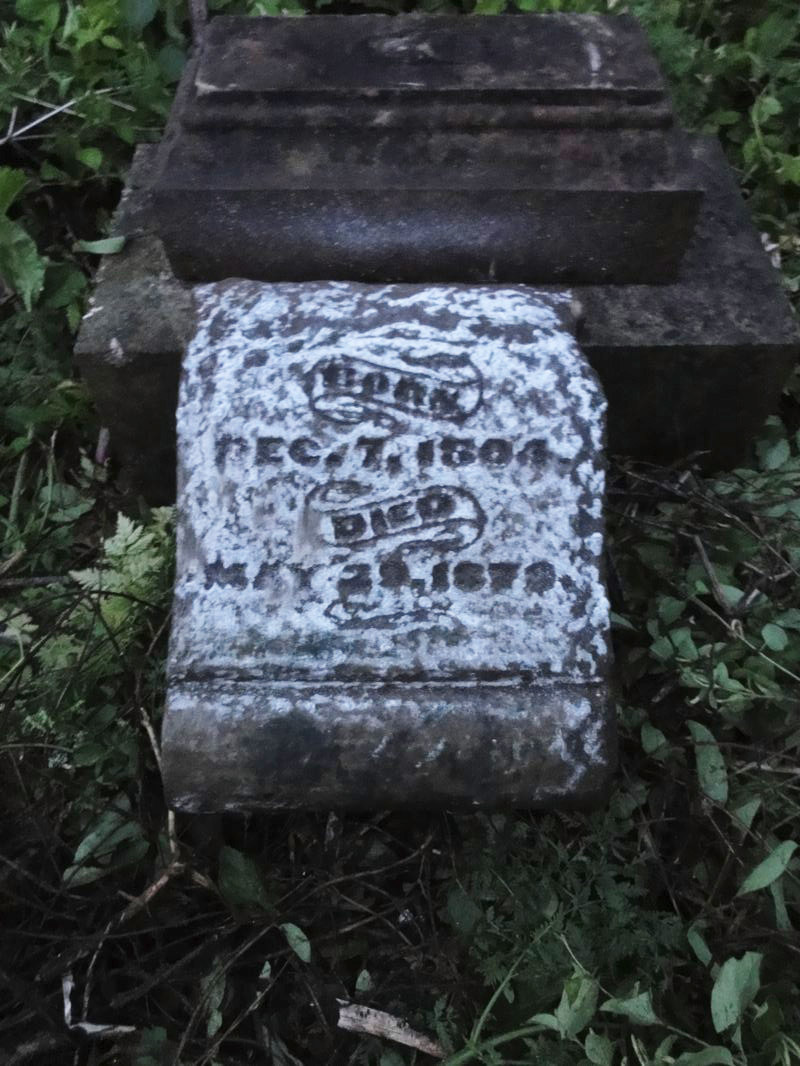Sandy Elrod Jones
1804-1878
[need picture]
![]()
Minerva College and Sandy E. Jones
Franklin College And Its Influences, Chapter 12
Through the kindness and assistance of W. A. C. Jones, of Livingston, Ala., a graduate of Franklin College, class of 1848, and his brother, A. B. C. Jones, of Liberty, Mo., also a graduate of the college, class of 1852 —sons of Sandy E. Jones, the founder of Minerva College—together with my own knowledge of the matter, I am able to present the following brief notice of Minerva College:
Franklin College had been in operation a few years, when Sandy E. Jones, who lived near the college, was encouraged by the brethren to open a school for girls, which it was hoped would be a source of as much good for them as Franklin College had been and promised to be for boys and young men.
Sandy E. Jones was a pioneer preacher in the reformation begun by Alexander Campbell and Barton W. Stone. He was reared in Casey County, Ky. His father was a Baptist preacher, but went with the Campbells in their reformatory movement. Sandy E. Jones became a preacher, moving from Kentucky to Missouri in 1831. In 1836 his wife died. He then returned to Kentucky with his children, and gave himself wholly to preaching the gospel. He evangelized in the States of Kentucky, Tennessee, Alabama, Mississippi, etc. He did a great deal of aggressive and successful preaching in Middle Tennessee. He was a popular preacher, especially with his brethren. He was strongly opposed by those who did not believe as he did, and, by his aggressiveness, made enemies, who sometimes became vindictive. He was a fearless preacher of the gospel, and preached it pure and simple as the power of God unto salvation.
In 1847 he married Mrs. Catherine (Stewart) Briggs, sister of Gen. A. P. Stewart, of Confederate fame. She was a highly educated and refined woman, who was a splendid teacher.
Encouraged by the brethren, as has been said, Sandy E. Jones constructed, or had built, a splendid (splendid for those days) brick building, located where Elm Crag, Mr. Fanning's school, had been before Franklin College was built, about one-quarter of a mile from the Franklin College building.
Minerva College opened its doors for the reception of pupils in 1848, under the superintendence of Sandy E. Jones, with his wife, Mrs. Catherine Jones, as principal. W. A. C. Jones, son of the manager, who had graduated at Franklin College, was professor of mathematics. Professor J. G. Giers was teacher of music. There were other teachers and tutors employed. Mrs. Jones was a fine principal and a magnificent teacher. These colleges were the outgrowth of the desire of the Christian people to have their own schools, and they were willing and anxious for their establishment, lending their assistance both morally and substantially in their establishment. Minerva College was a success from the beginning. It became the leading female school in all the South belonging to and patronized by people who belonged to the church of Christ, and they looked upon it as their school. The patronage, however, was not confined by any means to those who belonged to the church. Most of the Southern States were represented by young ladies or girls as students of the college. The school had a prosperous career from its opening till its exercises were interrupted by the Civil War in 1861. Quite a number of young women were graduated from it. Among these may be mentioned Miss Anna Fulgham, of Fayetteville, Tenn., who afterwards became the wife of Prof. William Lipscomb, who was the teacher of ancient languages in Franklin College, and Miss Kate Holding, who became the wife of Professor Carmack, another teacher of Franklin College. One of their sons, E. W. Carmack, is now Senator in Congress from Tennessee. These are mentioned because they became wives of Franklin College professors. There are others whose names could be mentioned who, by their cultivation and refinement, made their impress on society for good, fulfilling the duties devolving on Christian women so as to reflect honor upon their Alma Mater and credit upon themselves.
After the war, Sandy E. Jones sold Minerva College to President Tolbert Fanning, moved back to Kentucky, opened a school, still taught and preached, and died in the harness.
His wife, who for so many years had been engaged with him in school work, subsequently went to Memphis, engaging still in teaching a part of, if not all the time till her death, with her son, Prof. Wharton Jones, who is now one of the members of the State Board of Education for Tennessee.
Franklin College had been burned down. Mr. Fanning had subsequently purchased the Minerva College property. He, in conjunction with his wife, Mrs. Charlotte Fanning, opened the doors and began a school, calling it "Hope Institute." The country had been overrun and partially devastated by the war. Franklin College had accidentally been burned. Things without and within looked dark. The gloom of despondency seemed to hang as a pall over the fortunes and prospects of the country. Especially did Mr. Fanning feel that this was so. Schools had been broken up and abandoned. Scarcely a school in all the South had held any exercises during the war; and few of them, if any, were open. During the period from 1861 to 1866-67 ignorance had increased, crime had multiplied, and poverty had become general. Well, then, might he have thought that there was some hope of doing something to better the condition of the country every way by beginning again to teach school. Therefore he would change the name of Minerva College to Hope Institute, which has a record worthy of study and emulation.
-James E. Scobey, Franklin College And Its Influences, chapter 12, pages 227-230 Note: Scobey was baptized by S.E. Jones in 1850.
![]()
Chronology Of The Life Of S.E. Jones
1804
12.07
Sandy Elrod Jones born and raised in Casey County, Kentucky. His father was a Baptist preacher that transitioned into the Christian Movement, John S. Jones. SEJ grew up in the Campbell’s reform movement in Kentucky.
1807
09.26
Sophie Crutcher was born. She was the daughter of Samuel and Nancy J. Crutcher, who came originally from Virginia to Lincoln county, Kentucky: thence to Montgomery county, Missouri. Sophia had two brothers, John and Samuel, and one sister, Lucella. All four of the children reared families in the state of Missouri.
1824
08.29
SEJ, married to Sophie Crutcher, Lincoln County, Kentucky
1827
05.29
Daughter born, Nancy C. Jones,
1829
06.17
Son born, W. A. C. Jones is born
1830
In 1830, Sandy E. Jones held an evangelistic meeting at the courthouse in McMinnville but no congregation resulted. (McMinnville, TN, Warren County, also at Old Philadelphia in Viola, Warren County, Tn in the 1930s.) Note: a granite monument in front of the Old Philadelphia meetinghouse lists several preachers who preached there including Sandy E. Jones. (OPC)
1831
SEJ moved to Montgomery County, Missouri (CoC,259)
1832
01.05
SEJ’s son, A.B. Jones was born, in Middletown, Montgomery County, Missouri, the third of five children born to SEJ. (DOC,369)
1835
12.20
SEJ’S son born, Sandy E., Jr.,
1836
01.20
Sophie Crutcher Jones died in Montgomery County, Missouri
1843
“In the year 1843, Bro. Mulkey held a meeting with Elder Sandy E. Jones, in the town of Tompkinsville, within a few miles of where he was born, reared, and became a member of the church. Bro. Jones did most of the preaching, Bro. Mulkey the exhorting and the baptizing. This was a glorious meeting, resulting in 132 by confession and baptism.” (RMF,209f)
1847
02.10
Daughter, Nancy C., married William C. Powell
10.31
SEJ remarried – Catherine Briggs in Russellville, Alabama. They moved closely thereafter to Nashville, Tennessee
1848
01
There seemed to be an air of educational interest about Franklin College and its environments. Situated five miles from Nashville, it had neither city airs nor city vices. The fine water abounding in the neighborhood, the healthful location, the opportunities for school facilities, which Mr. Fanning's Elm Crag school had afforded, and subsequently those of Franklin College, had drawn many settlers around the place. Besides these, Sandy E. Jones, the aggressive evangelist from Kentucky, had preached much in Tennessee, and during the time had married a Mrs. Hawkins—a widow—who was a splendidly educated woman and had the reputation of being a splendid teacher. She was the sister of Prof. A. P. Stewart, of Cumberland University, Tennessee, and who subsequently became a general in the Confederate Army. Mr. and Mrs. Jones determined to open a female school.
After viewing the landscape over, they concluded the neighborhood of Franklin College was the best location. Soon a commodious brick building was erected within a few rods of where stood the building in which the Elm Crag school had been taught and not more than three hundred yards of Franklin College. The school was christened "Minerva College," and up to the war was well patronized, and maintained a good reputation for an educational institution. (FCI, 159,160)
04
In April of 1848, in the Christian Magazine, edited by Jesse B. Ferguson as a successor to Fanning's Christian Review, there appeared announcement of the plans of Sandy E. Jones and his wife to open another girls school near Franklin College. It aspired to offer a thorough classical education equal to those given to the young men and to bestow appropriate degrees and honors. That fall the board of trustees, on which Fanning himself served, announced that the school would be called Minerva
College and would be ready for the education of young ladies by January 1, 1849.
Minerva College consisted of a main edifice some fifty feet long, thirty-six feet wide, and three stories high, with a basement for the kitchen and dining room. The structure was built of substantial brick and was located about three hundred yards east of Franklin College itself. W.A. C. Jones, graduate of Franklin College and son of the superintendent of Minerva, served as the professor of mathematics. After the Civil War the Minerva College buildings were sold to the Fannings who subsequently operated a girls' school there. (HAZ,92)
1849
1.1
Minerva College opens near Franklin College in Nashville, Tennessee. Sandy E. Jones and his wife operate this school for girls. (This structure later serves as Fanning Orphan School.) The land is sold in 1942 to make way for Nashville's modern airport. (TOS,86)
09.14
Son Wharton S. is born to his SEJ’s second wife, September 14, 1849
1850
Preaching in Wilson County, Tn, he baptized James E. Scobey, who was 16 years old (BSGP,266f)
1878
05.29
Death of Sandy Elrod Jones in Hustonville, Kentucky. Burial in Powell Cemetery
1898
03
Death of Catherine Stewart Braggs Jones in Memphis, Tennessee. Burial at Elmwood Cemetery
_________________
KEY:
BSGP = Biographical Sketches of Gospel Preacher, H. Leo Boles, Gospel Advocate, 1832
CoC = Churches of Christ, by John T. Brown
DOC = The Disciple of Christ, 1881?
FCI = Franklin College And Its Influences, James E. Scobey,
HAZ = Hazzard Of The Dye, James Wilburn, Sweet Publications, 1969
RMF = Recollections of Men Of Faith, by W.C. Rogers
OPH = Old Philadelphia Church, by James A. Dillon
TOS = Tracing Our Steps, by John T. Smithson, III
Chronology Prepared By Scott Harp
![]()
Directions To And Visiting The Grave of Sandy Jones
Sandy E. Jones is buried in the Powell Cemetery. The cemetery is locationed on a farm just southwest of Hustonville, Kentucky. Hustonville lies a few miles south of Danville on Hwy. 127. In Hustonville, from Hwy. 127, head west on West Main St./Ky-78. Go about a mile and turn left on Carpenter's Creek Lane. Go a little less than a mile and the farm will be on the right. The number, 645, should be on the mail box. Head up the hill toward the farm house. When I was visiting in May, 2011, it was a working horse farm. To the left of the house is an old horse barn. Just to the left of the barn, in a small, barbed wire enclosure, is the cemetery.
WARNING TO GOOGLE MAP & GPS USERS: Carpenter's Creek Lane is a dead-end road on two ends. Google maps will show a southern entrance to the road from Hwy. 127, south of Hustonville. If you are coming into Hustonville from Liberty, you may be tempted to try this road. In May, 2011 it was nothing more than a narrow creek-bed road leading to a dead-end. Turning around was most difficult, and the road was not good at all. MAKE SURE you enter from the north end as related above.
When I visited the cemetery, the people living there were very nice, and willing to allow us into the cemetery. They told us that the previous owner of the property had bragged about the fact that he had fenced in the cemetery, and turned his animals in to destroy it. His reasoning was that he was tired of strangers coming on his property to visit the graveyard. Thus, he set out to destroy it, and this web editor can confirm the truth of it. The cemetery has been decimated. The desecration of that cemetery is nothing short of a crime. As it stands, the cemetery is in much need of restoration. The present owners stated their intention to repair it at some stage, but as yet have not gotten around to getting it done. It is understandable, as it will be quite an undertaking when they do.
As I mentioned, the owners of the property were more than kind in allowing me, and my friends, C. Wayne Kilpatrick and Tom L. Childers on the property. Fortunately, we had with us enough equipment to make a slight dent into the overgrowth of vines and weeds, most of which were taller than us. Adding to this was the fact that we arrived a few minutes before sunset. We had a very short window of time to go in and try to find the grave. Only by the providence of God did we find the small monument to Sandy E. Jones. By the looks of the photos below, it is easy to see that there is an upper part of the grave that is missing. Since the dates on the monument we found match the dates of Sandy's life, we deduced that it was his monument.
GPS Location
37°27'17.8"N 84°51'47.1"W
or D.d. 37.454949, -84.863081
![]()

Enclosure just left of barn is the location of the cemetery. C. Wayne Kilpatrick entering fence on left.

Born
Dec. 7, 1804
Died
May 29, 1878
Born
Dec. 7, 1804
Died
May 29, 1878

Cemetery has been vandalized. Needs great amounts of restoration
![]()
Photos Taken, May, 2011
Courtesy of Scott Harp
www.TheRestorationMovement.com
![]()
Special Thanks to C. Wayne Kilpatrick & Tom L. Childers for assisting in the location of the grave of Sandy E. Jones. This all-but-forgotten hero of the restoration movement, is buried in a cemetery that, too, is all-but-forgotten. Much work was done to locate the grave, and much more work needs to be done to restore the small cemetery.
![]()





